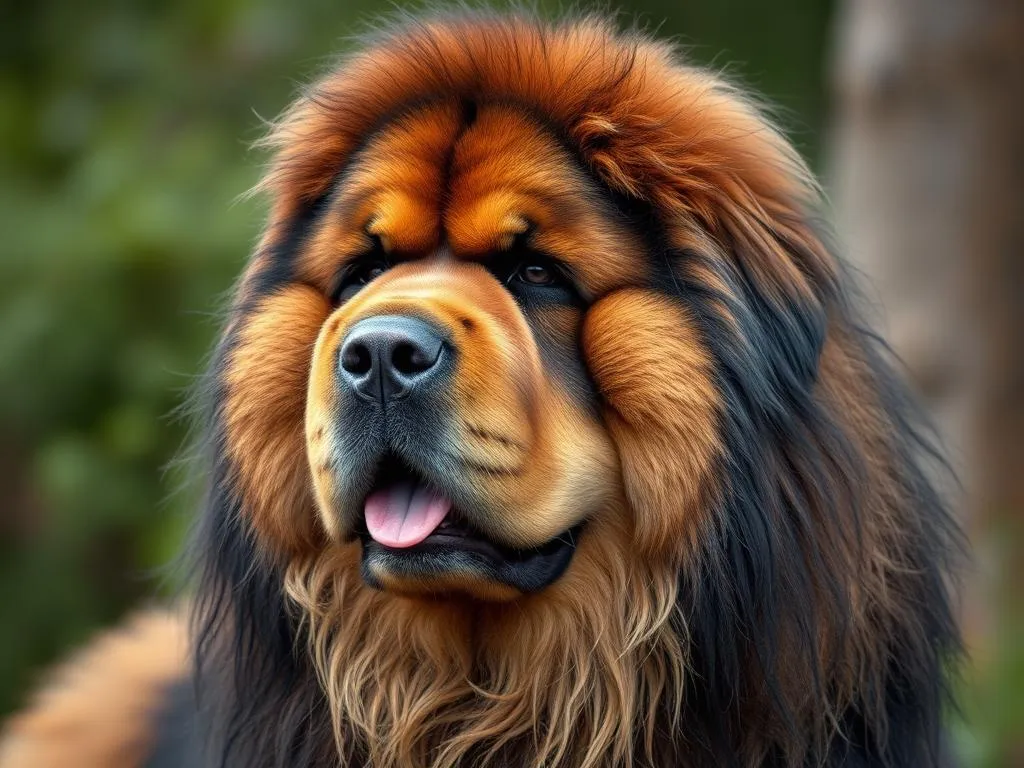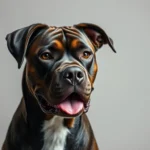
Introduction
When searching for a furry companion, many individuals and families consider hypoallergenic dog breeds due to allergies that can be triggered by pet dander, saliva, and urine. Hypoallergenic dogs are often sought after by those who suffer from pet-related allergies, as these breeds are believed to produce fewer allergens. Among the myriad of dog breeds, the Tibetan Mastiff stands out with its majestic appearance and rich history. However, the question arises: is a Tibetan Mastiff hypoallergenic? In this article, we will explore this question and delve into the characteristics and care of the Tibetan Mastiff.
Understanding Hypoallergenic Dogs
Definition of Hypoallergenic
The term “hypoallergenic” refers to breeds that are less likely to cause allergic reactions in sensitive individuals. While no dog is entirely free of allergens, hypoallergenic breeds typically produce fewer allergens, making them more suitable for allergy sufferers. It’s important to note that the notion of hypoallergenic dogs can sometimes lead to misconceptions; many people may assume that these breeds do not shed at all, which is not accurate.
Allergens in Dogs
Common allergens in dogs include dander, saliva, and urine. Dog dander is made up of tiny flakes of skin that can cause allergic reactions when inhaled or when they come into contact with the skin. Saliva can also be a potent allergen, as proteins found in it can trigger responses. For those with allergies, exposure to these allergens can lead to symptoms such as sneezing, itching, and in more severe cases, respiratory issues.
Factors That Make a Dog Hypoallergenic
Several factors contribute to a dog being labeled as hypoallergenic:
- Low-shedding coats: Breeds that shed less fur often release fewer allergens into the environment.
- Minimal dander production: Certain breeds produce less dander, thereby reducing potential allergens.
- Grooming habits: Regular grooming can help remove loose hair and dander, minimizing allergen exposure.
Overview of the Tibetan Mastiff
Breed History and Origin
The Tibetan Mastiff has a rich history that dates back thousands of years. Originating in the Himalayas, this breed was used by nomadic cultures as a guardian dog to protect livestock from predators like wolves and leopards. In Tibetan culture, these dogs were revered and often kept as status symbols. They are known for their strong protective instincts and loyalty.
Physical Characteristics
Tibetan Mastiffs are large, robust dogs, with males typically weighing between 90 to 150 pounds and females ranging from 70 to 120 pounds. They have a thick, double coat that can come in various colors, including black, brown, and gold. Their coat serves as insulation against harsh weather, but it also means they are prone to shedding, which could affect their hypoallergenic status.
Temperament and Behavior
In terms of temperament, Tibetan Mastiffs are known for being independent, strong-willed, and protective. They are often described as gentle giants that can be affectionate with their families while remaining wary of strangers. Their energy levels are moderate, and they require regular exercise to stay healthy and happy.
Is the Tibetan Mastiff Hypoallergenic?
Shedding and Dander Production
When considering whether the Tibetan Mastiff is hypoallergenic, it’s essential to analyze its shedding patterns. Tibetan Mastiffs have a thick double coat that sheds significantly, especially during seasonal changes. This shedding can contribute to higher levels of dander and allergens in the home, making them less suitable for allergy sufferers compared to truly hypoallergenic breeds.
Grooming Needs
Grooming is a crucial factor in managing allergens for Tibetan Mastiffs. They require regular grooming to maintain their coat and minimize shedding. Brushing them at least once a week can help reduce dander and loose hair. However, due to their dense fur, grooming can be a time-consuming process. If not managed well, the grooming needs of a Tibetan Mastiff might exacerbate allergy symptoms.
Allergic Reactions in Owners
Experiences among Tibetan Mastiff owners vary regarding allergic reactions. Some owners with mild allergies report being able to live comfortably with their Tibetan Mastiff, while others find themselves experiencing significant allergic responses. Factors influencing these reactions can include the individual’s specific allergies, the dog’s grooming routine, and overall cleanliness in the home.
Alternative Hypoallergenic Breeds
Low-Shedding Breeds
If allergies are a significant concern, prospective dog owners might consider alternative breeds known for being hypoallergenic. Here are some popular low-shedding breeds:
- Poodle: Available in standard, miniature, and toy sizes, Poodles are known for their curly coats and minimal shedding.
- Bichon Frise: This small breed has a soft, curly coat that does not shed much.
- Portuguese Water Dog: They have a dense, curly coat that is less likely to trigger allergies.
- Schnauzer: Available in miniature, standard, and giant sizes, Schnauzers have a wiry coat that sheds minimally.
Considerations for Allergy Sufferers
When selecting a dog breed, allergy sufferers should consider spending time with the breed before making a decision. This will help gauge individual reactions to the dog. Additionally, researching grooming needs and the breed’s shedding patterns can provide valuable insight into whether a breed is suitable for someone with allergies.
Caring for a Tibetan Mastiff
Grooming Tips
To minimize allergens while caring for a Tibetan Mastiff, consider the following grooming practices:
- Regular brushing: Aim for at least once a week, or more frequently during shedding seasons, to remove loose hair and dander.
- Bathing: Bathe your Tibetan Mastiff every few months. This can help reduce dander but should not be overdone, as frequent bathing can strip natural oils from their coat.
- Professional grooming: Consider hiring a professional groomer experienced with large breeds to ensure proper care.
Living Environment Accommodations
Creating an allergy-friendly home is essential for those with sensitivities. Here are some suggestions:
- Regular cleaning: Vacuum frequently and use HEPA filters to capture pet dander and hair.
- Air purification: Invest in high-quality air purifiers to reduce allergens in the home.
- Designated dog areas: Keep your Tibetan Mastiff in specific areas of the house to limit exposure to allergens in living spaces.
Health Considerations
Tibetan Mastiffs can be prone to certain health issues, such as hip dysplasia and obesity, which may indirectly affect allergens. Regular veterinary check-ups and a balanced diet are crucial for maintaining their overall health and potentially minimizing allergen production.
Conclusion
In summary, while the Tibetan Mastiff is a magnificent breed with a rich history and a unique temperament, it is not classified as hypoallergenic. Their shedding patterns and grooming needs contribute to the presence of allergens in the home, making them less suitable for those with allergies. Prospective dog owners should take time to assess their allergies and consider alternative hypoallergenic breeds if sensitivity is a significant concern. Ultimately, choosing the right breed involves understanding individual needs and preferences, as well as the specific characteristics of the dog.
Frequently Asked Questions (FAQs)
Can people with allergies own a Tibetan Mastiff?
While some owners with mild allergies may cohabitate comfortably with their Tibetan Mastiff, many allergy sufferers find that the shedding and dander production can trigger significant reactions.
What can be done to reduce allergens in the home?
To manage allergens around dogs, regular cleaning, using air purifiers, and maintaining a consistent grooming routine can significantly help reduce pet dander and hair in the home.
Are there any other large hypoallergenic dog breeds?
For those interested in larger dogs that are hypoallergenic, consider breeds such as the Giant Schnauzer or the Irish Water Spaniel, which are known for their minimal shedding.
How to test for dog allergies before adoption?
To identify potential allergies before bringing a dog home, spend time with the breed in a controlled environment. This allows you to observe any allergic reactions and assess compatibility with your lifestyle.





